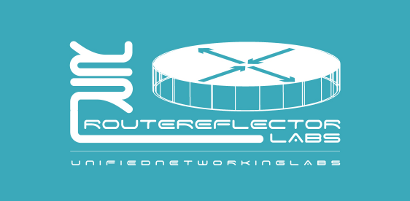An example howto create a new Unetlab Ubuntu template:
Re-use an existing template
Go to /opt/unetlab/html/templates/ and find any of the template which is close to your need.Regarding Ubuntu Linux I selected template name linux.php.Copy and rename to your one, for example ubuntu.php
Customize the template
$p[‘type’] = ‘qemu’;
$p[‘name’] = ‘Linux’;
$p[‘icon’] = ‘Server.png’;
$p[‘cpu’] = 1;
$p[‘ram’] = 2048;
$p[‘ethernet’] = 1;
$p[‘console’] = ‘vnc’;
$p[‘qemu_arch’] = ‘x86_64’;
$p[‘qemu_nic’] = ‘virtio-net-pci’;
$p[‘qemu_options’] = ‘-machine type=pc-1.0,accel=kvm -vga std -usbdevice tablet -boot order=dc’;
Create a config fileFile name:
/opt/unetlab/html/includes/config.phpconfig.php content:
Copy the content from init.php and add ubuntu as a new line in the file.
<?php $node_templates = Array(
‘a10’ => ‘A10 vThunder’,
‘clearpass’ => ‘Aruba ClearPass’,
‘timos’ => ‘Alcatel 7750 SR’,
‘timos12’ => ‘Alcatel 7750 SR RTC shifted (for license)’,
‘veos’ => ‘Arista vEOS’,
‘brocadevadx’ => ‘Brocade vADX’,
‘cpsg’ => ‘CheckPoint Security Gateway VE’,
‘acs’ => ‘Cisco ACS’,
‘asa’ => ‘Cisco ASA’,
‘asav’ => ‘Cisco ASAv’,
‘cda’ => ‘Cisco Context Directory Agent’,
‘csr1000v’ => ‘Cisco CSR 1000V’,
‘cips’ => ‘Cisco IPS’,
‘ise’ => ‘Cisco ISE’,
‘c1710’ => ‘Cisco IOS 1710 (Dynamips)’,
‘c3725’ => ‘Cisco IOS 3725 (Dynamips)’,
‘c7200’ => ‘Cisco IOS 7206VXR (Dynamips)’,
‘iol’ => ‘Cisco IOL’,
‘titanium’ => ‘Cisco NX-OSv (Titanium)’,
‘sourcefire’ => ‘Cisco Sourcefire’,
‘vios’ => ‘Cisco vIOS’,
‘viosl2’ => ‘Cisco vIOS L2’,
‘vnam’ => ‘Cisco vNAM’,
‘vwlc’ => ‘Cisco vWLC’,
‘vwaas’ => ‘Cisco vWAAS’,
‘coeus’ => ‘Cisco Web Security Appliance’,
‘xrv’ => ‘Cisco XRv’,
‘nsvpx’ => ‘Citrix Netscaler’,
‘cumulus’ => ‘Cumulus VX’,
‘extremexos’ => ‘ExtremeXOS’,
‘bigip’ => ‘F5 BIG-IP LTM VE’,
‘fortinet’ => ‘Fortinet FortiGate’,
‘hpvsr’ => ‘HP VSR1000’,
‘olive’ => ‘Juniper Olive’,
‘vmx’ => ‘Juniper vMX’,
‘vsrx’ => ‘Juniper vSRX’,
‘linux’ => ‘Linux’,
‘mikrotik’ => ‘MikroTik RouterOS’,
‘ostinato’ => ‘Ostinato’,
‘paloalto’ => ‘Palo Alto VM-100 Firewall’,
//’riverbed’ => ‘Riverbed’,
‘sterra’ => ‘S-Terra’,
‘svtc’ => ‘Spirent Test Center’,
‘vyos’ => ‘VyOS’,
//’esxi’ => ‘VMware ESXi’,
‘win’ => ‘Windows’,
‘ubuntu’ => ‘Ubuntu’
);
Copy the QEMU image to the right place
Hard disk file name: hda.qcow2Copy to the following directory, you can use the additional directory name convention like this: /opt/unetlab/addons/qemu/ubuntu-14.04/hda.qcow2
Fix Unetlab image permissions
run the following command: /opt/unetlab/wrappers/unl_wrapper -a fixpermissions
Finished
Now you can use the new Template name under the Lab editor
